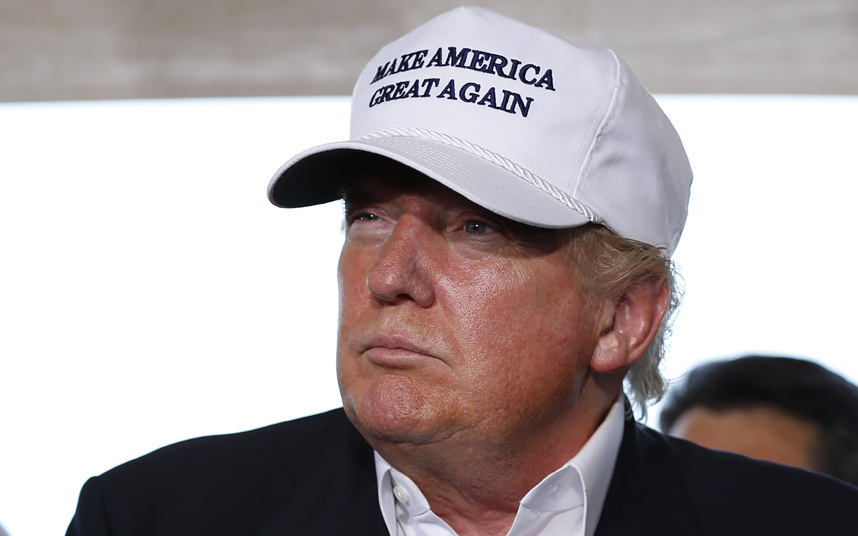
A new poll shows Donald Trump leading Hillary Clinton in Ohio by 5 points — a result that diverges from other public polling but could also indicate that recent controversies have taken a toll on Clinton’s campaign.
The Bloomberg Politics poll, conducted by Iowa-based Selzer & Co., shows Trump leading Clinton among likely voters in Ohio, 48 percent to 43 percent. Six percent of likely voters said they would support another candidate, and 3 percent are undecided.
The survey was conducted beginning last Friday, the night Clinton publicly referred to half of Trump’s supporters as “deplorables,” some of whom are “irredeemable” because of their racist or sexist views. Pollsters continued to survey voters through Monday, one day after Clinton’s health scare in Lower Manhattan and the subsequent disclosure of her pneumonia diagnosis.
The Bloomberg poll differs from most other Ohio public polling in the race. A CBS News/YouGov poll, which was conducted via the internet last Wednesday through Friday and overlaps with the Bloomberg poll by one night, gave Clinton a 7-point lead over Trump, 46 percent to 39 percent.
A Quinnipiac University survey, conducted in late August and early September and released last week, showed Trump ahead of Clinton in Ohio by 1 point in a head-to-head matchup. But Trump held a 4-point lead in a subsequent question that gave respondents the option of choosing Libertarian Gary Johnson or Green Party nominee Jill Stein.
In the Bloomberg poll, Trump maintains a 5-point advantage over Clinton with Johnson and Stein included, 44 percent to 39 percent, with Johnson at 10 percent and Stein at 3 percent.
Incumbent GOP Sen. Rob Portman holds a big lead in Ohio’s closely watched Senate race, the poll also shows. Portman, who is seeking a second term, leads former Democratic Gov. Ted Strickland, 53 percent to 36 percent.
Recent polls have given Portman a significant advantage, but not to this degree. His previous high-water mark in a live-interview survey had been an 11-point lead in last week’s Quinnipiac poll.
Ann Selzer, the well-respected Iowa pollster who produced the survey, provided Bloomberg with a possible explanation for its divergent results: Voters who identified as Republicans were more likely to be classified as likely voters than those who said they identified as Democrats. Including those who lean toward one party, Republicans comprised about 43 percent of the sample, while Democrats made up roughly 36 percent.
“Our party breakdown differs from other polls, but resembles what happened in Ohio in 2004,” Selzer told Bloomberg, pointing to exit polling from 12 years ago when George W. Bush carried the state. “It is very difficult to say today who will and who will not show up to vote on Election Day. Our poll suggests more Republicans than Democrats would do that in an Ohio election held today.”
Democrats in the two most-recent elections have turned out to elect now-President Barack Obama. In the 2008 exit polls, Democrats made up 39 percent of the electorate, compared to 31 percent for Republicans. In 2012, it was 38 percent Democratic and 31 percent Republican.
According to the Bloomberg article accompanying the survey, larger shares of male and older voters passed through Selzer’s likely-voter screen, tilting the electorate toward Trump and the Republicans.
Coming in the midst of a difficult weekend for the Clinton campaign, the poll could represent significant movement toward Trump, at least in Ohio. But more evidence is required to show whether it represents a real shift in the race – or whether that shift will be durable, with Clinton planning to return to the campaign trail on Thursday.
The Bloomberg poll surveyed 802 likely voters and has a margin of error of plus or minus 3.6 percentage points.



Expositores: Oscar Vidarte (PUCP) Fernando González Vigil (Universidad del Pacífico) Inscripciones aquí. Leer más
Una retrospectiva para entender los próximos cuatro años. Leer más
En la conferencia se hará una presentación de los temas más relevantes del proceso de negociación se llevó a cabo desde el 2012, así como del acuerdo de paz firmado entre el Gobierno colombiano y la guerrilla de las FARC a finales del 2016. Se analizarán los desafíos y las... Leer más
El Observatorio de las Relaciones Peruano-Norteamericanas (ORPN) de la Universidad del Pacífico es un programa encargado de analizar y difundir información relevante sobre la situación política, económica y social de Estados Unidos y analizar, desde una perspectiva multidisciplinaria, su efecto en las relaciones bilaterales con el Perú.
© 2025 Universidad del Pacífico - Departamento Académico de Humanidades. Todos los derechos reservados.

